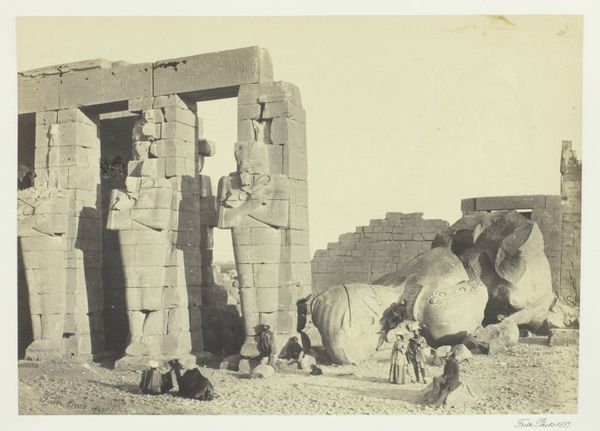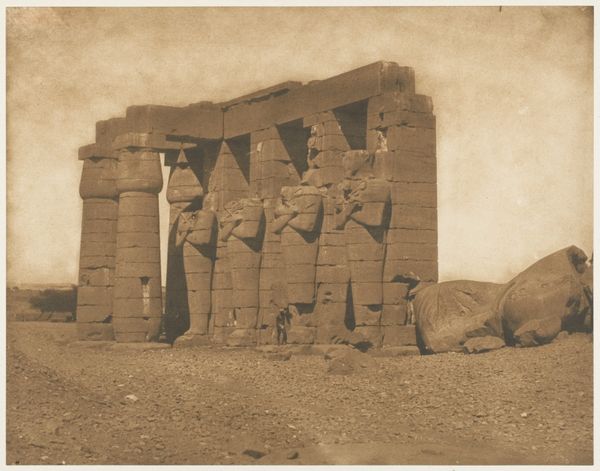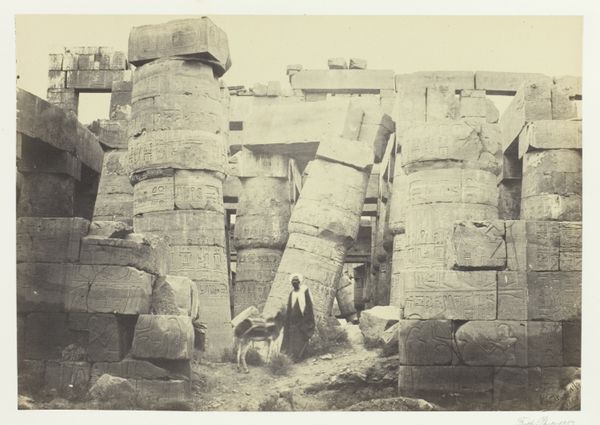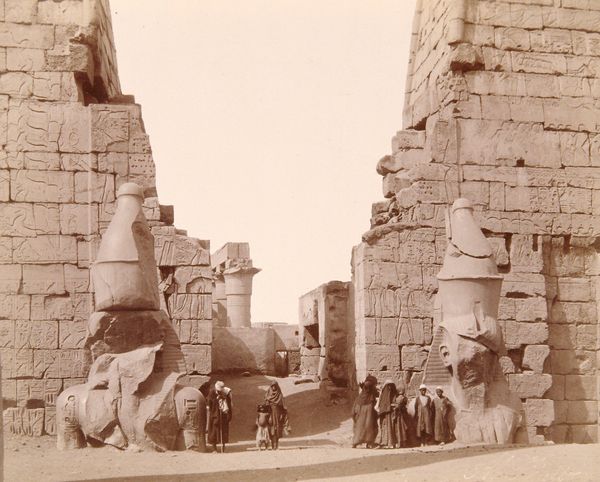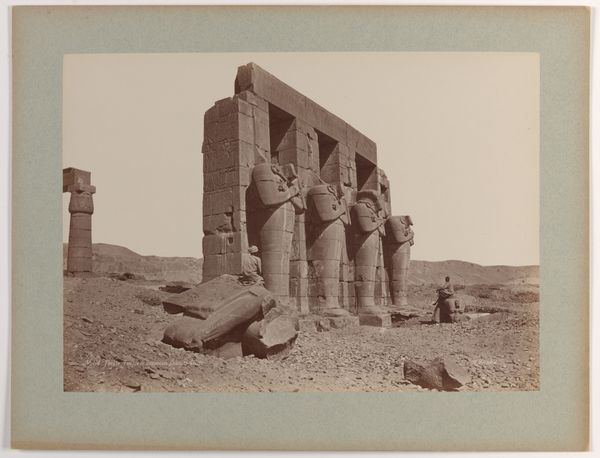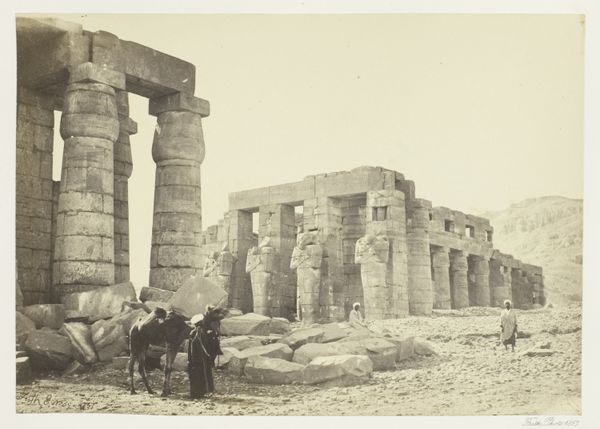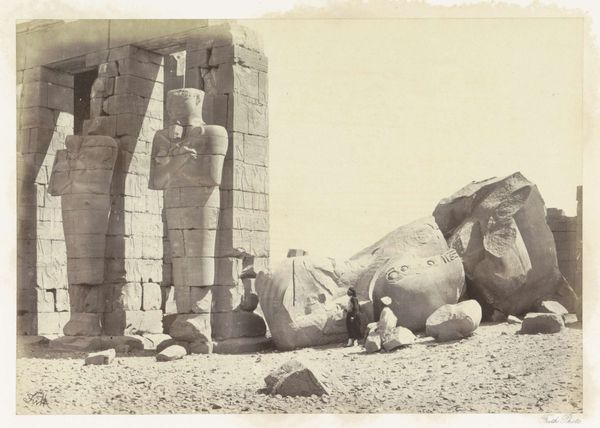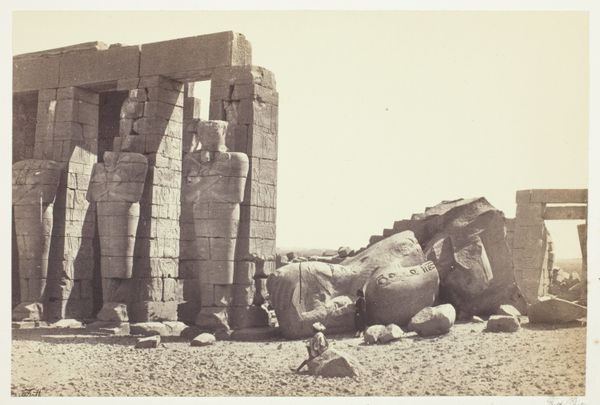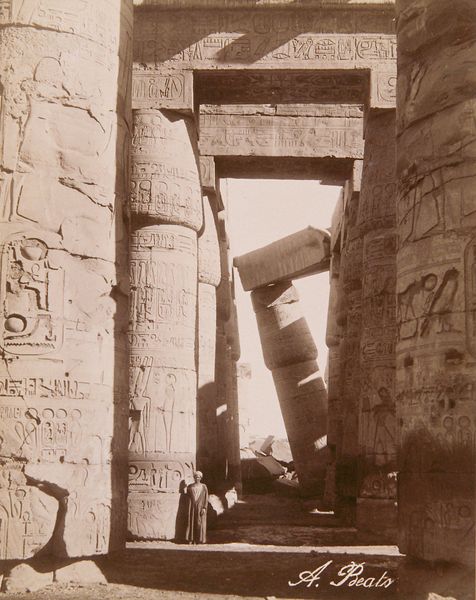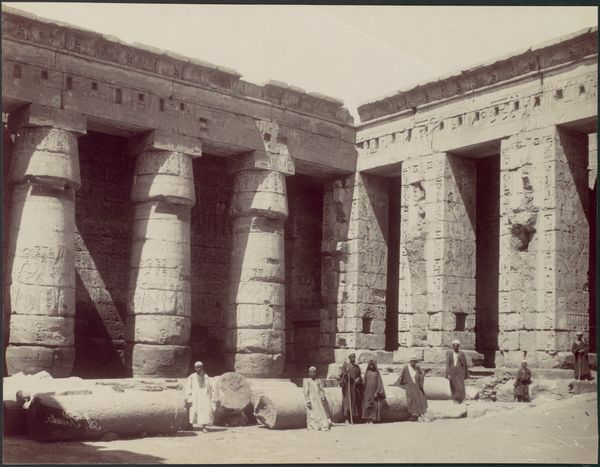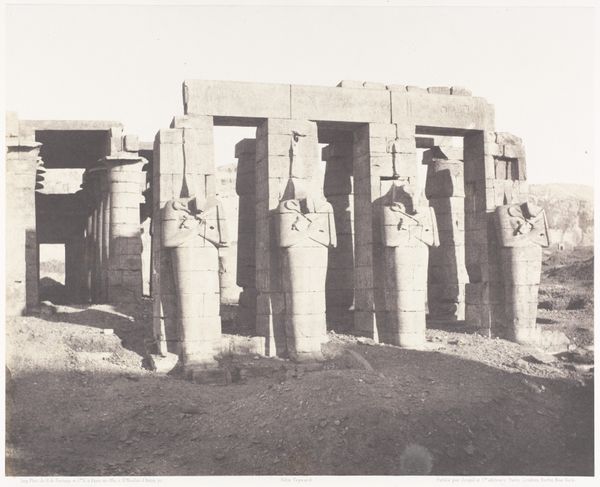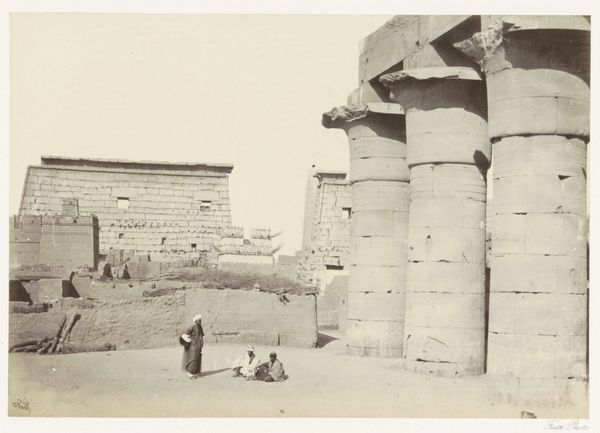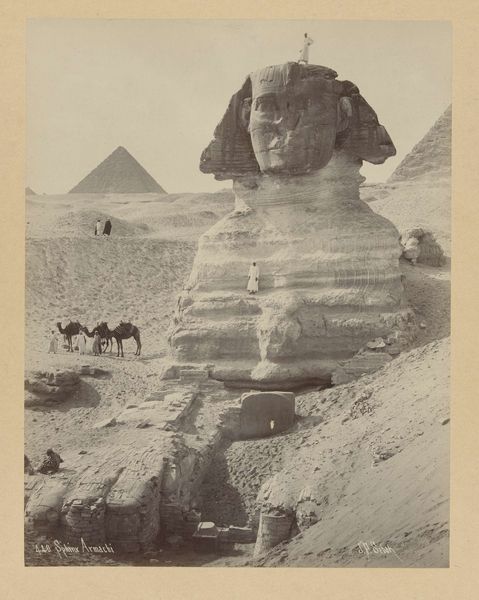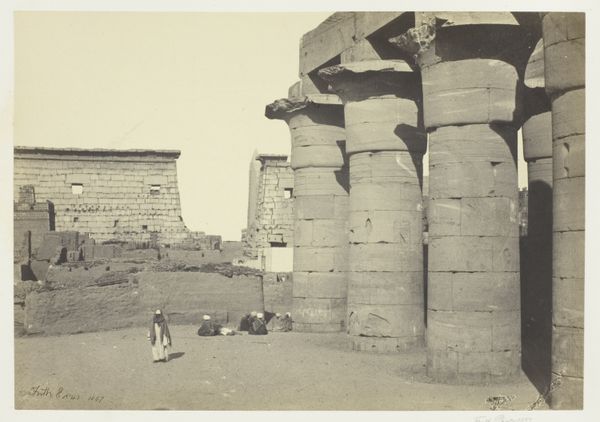
daguerreotype, photography
#
film photography
#
landscape
#
daguerreotype
#
ancient-egyptian-art
#
photography
#
ancient-mediterranean
#
cityscape
Dimensions: Image: 37.9 x 47.7 cm (14 15/16 x 18 3/4 in.) Mount: 59.9 × 73.8 cm (23 9/16 in. × 29 1/16 in.)
Copyright: Public Domain
This photograph by Francis Frith captures the Rameseum at Thebes, presenting a scene dominated by colossal statues of pharaohs. These figures, though ruined, still evoke a sense of imposing power and permanence, speaking to the divine status afforded to Egyptian rulers. Consider the tradition of monumental sculpture and the consistent desire to immortalize figures through massive forms. These effigies of pharaohs are not merely portraits; they are declarations of godlike authority, akin to the monumental architecture and statuary found across cultures, from the emperors of Rome to the leaders of modern totalitarian states. We see this impulse manifest in the colossal head of Ramses, now fallen, echoing the fragmented statues of antiquity that yet retain their capacity to awe and inspire. These images serve as a potent reminder of the cyclical nature of power, its rise, and its inevitable decay, engaging viewers on a deep, subconscious level with the emotional resonance of past grandeur. Over time, the symbolic representation of absolute power and the act of immortalizing leaders through monumental art have persisted, adapting to new cultural contexts while retaining their primal psychological impact.
Comments
No comments
Be the first to comment and join the conversation on the ultimate creative platform.
